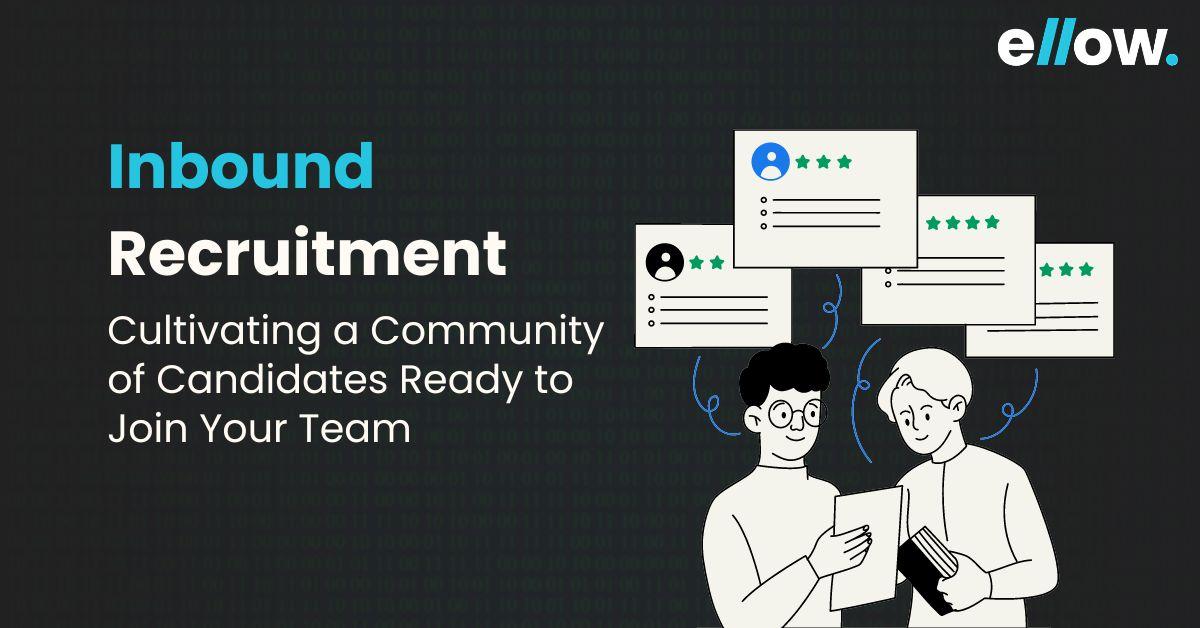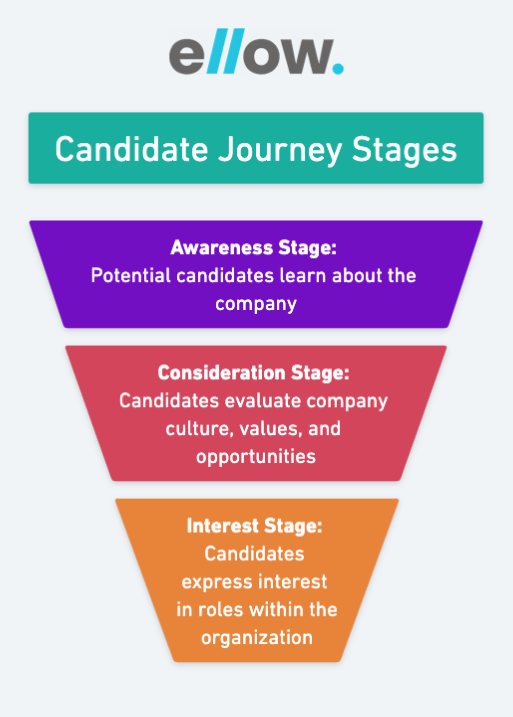Let’s build the future together.
Great ideas need great people. Partner with us to bring your vision to life, or take the first step in your career by joining our team of innovators.

Are you seeking a game-changing transformation in your hiring process?
Picture a recruitment strategy that not only defeats traditional approaches but also lifts the caliber of your potential hires.
Enter Inbound Recruitment, a revolutionary approach that’s reshaping how companies attract talent. Think about the traditional hiring hustle – it’s often like hunting in the dark for that one perfect candidate, sifting through countless applications that don’t quite fit.
Now, imagine flipping the script. Instead of you chasing after candidates, what if the best talents in your field started seeking you out? That’s the power of Inbound Recruitment.
Inbound Recruitment is all about making your company irresistible to top-tier professionals. It’s a strategy that turns the tables, leveraging your company’s culture, values, and opportunities to attract candidates organically. This method isn’t just innovative; it’s effective.
According to insights from ismartrecruit.com, companies embracing inbound tactics see a whopping 50% boost in the quality of their candidates.
Join us as we explore its meaning and benefits, address potential drawbacks, and provide expert tips that can reshape your talent acquisition strategy. Get ready to elevate your recruitment game and unlock a realm of new possibilities.
Inbound Recruiting is a strategy that focuses on attracting and engaging potential candidates using targeted content, social media, and search engine optimization (SEO) strategies to create a compelling employer brand that draws candidates to you.
Unlike traditional outbound recruiting, which relies on directly reaching out to candidates through job postings, cold calls, or headhunting, inbound recruiting turns your company into a magnet for talent.
The primary focus of inbound recruitment is on passive job seekers – individuals currently employed elsewhere but open to exploring better opportunities.
Surprisingly, 73% of the job market consists of these passive seekers, making them a valuable target for organizations. By implementing effective inbound recruitment strategies, companies can establish connections with this untapped talent pool, enriching their diversity.
Employer branding, a crucial aspect of inbound recruitment, refers to the positive perception job seekers have about an employer. Building a reputable employer brand takes time, but it is a delicate asset.
One misstep can jeopardize the hard-earned positive image, potentially deterring potential employees. Inbound recruitment, therefore, not only seeks talent but also actively contributes to fostering and maintaining a favorable employer brand in the competitive job market.
The approach is passive, emphasizing the cultivation of an attractive employer brand and the creation of a compelling presence in inbound recruiting. This methodology relies on the hope that talented individuals will organically discover and show interest in the company or open positions. The stages of the candidate journey in inbound recruiting encompass awareness, consideration, and interest.

During the awareness stage, potential candidates become acquainted with the company through various channels such as social media, content marketing, and employer branding efforts.
In the consideration stage, candidates evaluate the company culture, values, and opportunities.
The interest stage is where candidates express a genuine interest in potential roles within the organization.
On the contrary, outbound recruiting takes a proactive approach to talent acquisition. Instead of waiting for candidates to find the company, recruiters actively seek out potential candidates. The goal is to swiftly identify suitable talent, move them through the application process, and extend job offers.
The candidate journey in outbound recruiting is more direct, involving the identification of potential candidates, direct outreach, and swift progression to the application and job offer stages. This method allows organizations to fill immediate job openings efficiently.
Inbound recruiting is a strategic, long-term solution designed to progressively advance an organization’s hiring strategy. It involves the creation and maintenance of an employer brand that not only attracts current candidates but also contributes to building a robust talent pipeline for the future.
While inbound recruiting demands an investment of time to establish a strong employer brand and cultivate a pool of qualified applicants, the resulting improvement in the quality and cost-effectiveness of hiring is substantial.
On the other hand, outbound recruiting serves as a short-term, tactical resolution primarily utilized when immediate hiring needs arise. This approach is agile and designed to swiftly address urgent hiring requirements, making it a go-to strategy for organizations facing immediate talent gaps.
Unlike inbound recruiting, outbound recruiting does not require the same long-term commitment but is instead implemented as needed, allowing organizations to respond promptly to changing staffing demands.
The focus is on helping potential candidates identify their pain points through the consumption of relevant content. By providing insightful blogs, employee testimonials, and company news, organizations aim to address concerns such as cultural fit or salary expectations. The candidate, armed with this information, can make more informed decisions about their compatibility with the organization.
Conversely, outbound recruiting positions the recruiter in a proactive role, actively seeking potential pain points in candidates. Recruiters engage in direct communication with candidates, exploring their needs, preferences, and potential concerns.
However, it can be challenging, as candidates may not always be aware of their pain points or may be hesitant to admit them. This direct outreach allows recruiters to gauge suitability more rapidly but may require more effort to uncover nuanced candidate considerations.
The table shows their differences.
| Aspect | Inbound Recruiting | Outbound Recruiting |
| Focus | Candidate-centric | Company-driven |
| Purpose | Talent pipeline for the future | Filling immediate job openings |
| Branding | Proactive employer branding | Immediate hiring needs |
| Outreach methods | Content marketing, engagement | Direct outreach methods |
| Relationship building | Emphasis on relationship-building | Transactional, focused on immediate hires |
Inbound recruiting offers distinct advantages for recruiters and hiring managers. Here is why it is a great choice:

Embracing inbound recruiting means less time spent communicating with individual candidates. The process doesn’t require extensive scouting skills or prolonged one-on-one interactions. While there is an initial investment, particularly for long-term campaigns involving brand messaging, ads, and online platforms, the overall upfront effort is significantly reduced.
Inbound recruiting opens the door to a vast pool of potential candidates. Well-established brands naturally attract a multitude of individuals interested in joining their workforce. By adopting an inbound framework, recruiters gain access to a diverse range of candidates, providing more opportunities to identify and select the perfect fit for the team.
Implementing an inbound recruiting strategy yields long-term benefits. The continuous nature of this approach ensures a steady influx of candidates over time. With an established strategy in place, recruiters always have a pool of interested and qualified individuals whenever a new position becomes available. This eliminates the need to start the hiring process from scratch for each opening.
Inbound recruiting leverages various communication channels effectively. Social networks, including Twitter, Instagram, Facebook, and LinkedIn, play a crucial role in reaching potential candidates.
These platforms not only help in identifying individuals familiar with the business through shared content but also enable recruiters to track and assess their profiles. The diverse use of these channels enhances the overall candidate experience while creating a positive impact on the company’s image.
While Inbound Recruiting has its advantages, it is crucial to be aware of the drawbacks to making informed decisions in your recruitment strategy. Here are some drawbacks to consider:

Inbound recruitment methods may not be the best choice for urgent or short-term hiring needs. With 83% of HR professionals facing challenges in recruiting suitable candidates, relying solely on Inbound methods might not yield quick results. This approach is more effective when planning for future vacancies rather than addressing immediate staffing needs.
Inbound recruitment creates awareness about your organization, attracting numerous resumes. However, if you rely solely on Inbound methods, you’ll have to wait for potential candidates to express interest. This waiting period can disrupt your recruitment functions, causing delays and potentially hindering overall productivity. The prolonged wait applies to each vacancy, creating a repetitive cycle of waiting for suitable candidates.
While receiving a large volume of resumes daily is a positive aspect, it also means gathering a more general candidate pool. This can be disadvantageous for specific targeting as not all resumes may meet your precise requirements.
Additionally, a diverse talent pool may lead to opportunity costs, requiring careful consideration. Some candidates may submit resumes without actively seeking employment, making it challenging to assess their suitability for the job.


Check this video out: What is inbound recruiting?
Inbound recruiting, the approach of drawing candidates to your organization through positive branding, faces various challenges:
Candidates encounter information from diverse sources, making it tough to stand out and grab their attention amid the information overload.
Maintaining a consistent and attractive employer brand across different platforms poses a challenge. Inconsistencies in messaging can confuse candidates and weaken the overall image of the organization.
Attracting candidates is just the beginning; keeping them interested throughout the recruitment process, particularly passive candidates not actively seeking new opportunities demands continuous effort.
Inbound recruiting involves creating content, responding to inquiries, and maintaining an active online presence, consuming significant time and requiring dedicated resources.
Attracting a broader pool of candidates, including passive ones, can lead to high-quality hires but may extend the time it takes to fill positions due to relationship-building.
Determining the direct return on investment for inbound recruiting efforts is challenging. Tracking the impact of employer branding on candidate quality, retention rates, and overall business performance requires robust analytics.
While aiming for a positive candidate experience, it can be challenging to consistently deliver. Slow response times, lack of communication, or a confusing application process may harm the employer’s brand.
While technology can streamline the process, relying too much on automated systems can result in impersonal interactions. Striking the right balance between automation and a human touch is crucial.
Social media platforms and search engines frequently update their algorithms. Staying updated and adjusting recruitment strategies accordingly can be a persistent challenge.
Exposure to your brand and content may create high expectations. Aligning the actual employee experience with these expectations is crucial to prevent disillusionment.
Inbound recruiting exposes organizations to public feedback, both positive and negative. Handling negative reviews gracefully and addressing concerns is challenging but essential for maintaining employer brand integrity.
When deciding on an Inbound recruitment approach, it is essential to weigh the pros and cons. Inbound recruitment opens up a broad pool of candidates, but it’s not the only solution available.
To make Inbound recruitment work, you need to build a strong brand image to attract suitable candidates. If you are committed to creating a solid brand, Inbound recruitment can be effective in ensuring a continuous flow of potential employees.
Combining both Inbound and outbound recruitment methods allows you to choose from the best candidate pool for any position. While Inbound recruitment may not be ideal for every company, it is worth considering if you want to attract a diverse range of candidates to your organization.
Inbound recruiting offers a fresh approach to finding potential candidates, drawing in individuals who may otherwise overlook traditional recruitment methods. However, achieving success with this strategy demands a robust plan and consistent effort to capture the attention and interest of prospective employees.
It is important to note that inbound recruiting may not be suitable for companies with a tarnished reputation. Prioritizing reputation repair is essential before expecting candidates to be drawn to the organization. A positive public image is a key factor in the success of inbound recruiting efforts.
When integrated with a more conventional outbound recruiting approach, inbound recruiting can be a valuable tool for securing top talent, especially in competitive markets. Balancing both strategies effectively can contribute to meeting the talent needs of your company.
Talent Management Framework Guide
Things Companies Must Consider While Hiring Remote Developers
Hiring Unconventional Talent to Boost Business Growth
A Comprehensive Guide of Sourcing to Talent Onboarding
Inbound talent acquisition is a modern hiring approach focused on attracting potential candidates to your company by creating a positive employer brand and leveraging online channels. It involves drawing in candidates who may not actively be seeking employment but are enticed by the company’s reputation and values.
Unlike traditional recruiting, which involves actively reaching out to potential candidates, inbound talent acquisition relies on creating a magnetic employer brand that naturally attracts talent. It emphasizes building a positive online presence, engaging content, and fostering a company culture that appeals to prospective employees.
Inbound recruiting is most effective for companies with a positive reputation and a commitment to maintaining a strong employer brand. If a company has a poor reputation, it is advisable to address and rectify those issues before fully embracing inbound recruiting to ensure success.
A strong online presence is crucial in inbound recruiting. Companies need to establish and maintain an active presence on social media, career platforms, and their website. Engaging content, testimonials, and a transparent portrayal of the company culture contribute to attracting passive candidates.
To maximize hiring success, companies can integrate inbound talent acquisition with traditional outbound recruiting strategies. This may involve combining online branding efforts with active outreach through job postings, networking events, and recruitment agencies, creating a comprehensive and effective approach to talent acquisition.

How Top SaaS Companies Build Agile Teams with Remote Developers

How to Hire Vetted Remote Developers in a Hyper-Competitive Market

Top 5 Countries to Hire Remote Developers (and Why)
Please feel free to share your thoughts and we can discuss it over a cup of tea.
Get a quote
How Top SaaS Companies Build Agile Teams with Remote Developers

Six Things to Consider When Hiring Remote Talent

ellow.io enters remote hires market with AI-based screening process